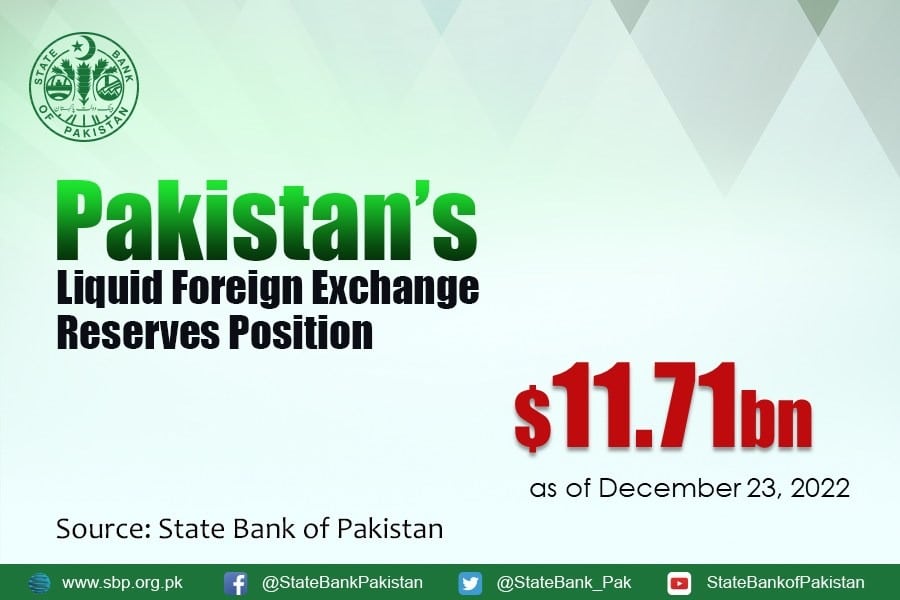An extremely critical level of $5.82 billion was reached by the State Bank of Pakistan’s (SBP) foreign exchange reserves on Thursday, according to statistics. This represents a further $294 million decline. SBP-held reserves are at their lowest level since April 2014.
The nation’s total holdings of liquid foreign exchange were $11.71 billion. There were $5.89 billion in net foreign reserves held by commercial banks.
SBP said, “During the week ended on Dec 23, 2022, SBP’s reserves decreased by $294 million to $5.82 billion due to external debt repayment.”
The SBP’s foreign exchange holdings decreased by $584 million to $6.12 billion last week.
SBP shared the data on its Twitter handle.
Total liquid foreign #reserves held by the country stood at US$ 11.71 billion as of December 23, 2022. For details https://t.co/WpSgomnKT3 pic.twitter.com/cVUHF6ZBg9
— SBP (@StateBank_Pak) December 29, 2022
The amount of SBP’s foreign exchange reserves, which were close to $18 billion at the beginning of the year but have significantly decreased over the last 12 months, emphasises the pressing need for Pakistan to finish the upcoming review of the International Monetary Fund (IMF) programme.
At the moment, discussions for the ninth review appear to have halted due to a few earlier requirements of the Washington-based lender.
At the same time, the government has also been unable in obtaining crucial support from allies.
The challenge has left Pakistani authorities scurrying to set up foreign exchange amid increased concerns over the country’s capacity to pay its debts and fund imports.
The country’s economy is still in a “difficult situation,” but Finance Minister Ishaq Dar said on Wednesday that “there is no likelihood that Pakistan would fail.”
“Conditions are tight, but Pakistan will move forward. Pakistan will not default,” Dar said.
“I admit that we do not enjoy the same level of foreign exchange reserves ($24 billion) we left back in 2016. But that is not the government’s fault, the fault is in the system and we must ensure that every stakeholder takes part in carrying the country forward.” added he.
Analysts were taken aback by the SBP’s announcement to lift the import restrictions it placed in May and July 2022 due to declining reserves.
“2023 to be Toughest Year for Auto Industry” Mashhood Ali Khan
It did, however, encourage authorised dealers to actively interact with all of their clients in order to fulfil their demands while taking into account their risk tolerance and the liquidity circumstances present in the foreign currency market.
According to the central bank, ADs may prioritise or facilitate imports under the following categories: essential imports, energy imports, imports by industries with a focus on exports, imports for agricultural inputs, deferred payment / self-funded imports, and imports for export-oriented projects that are almost finished.
